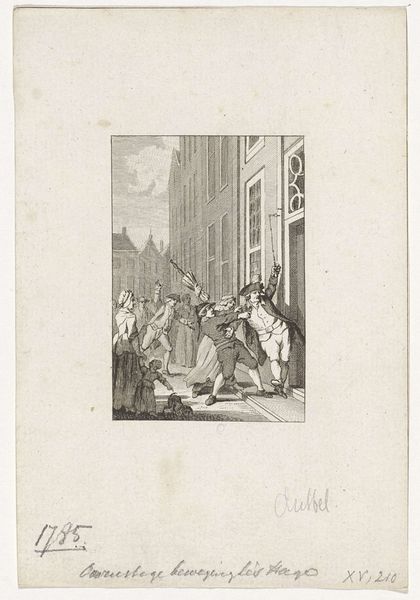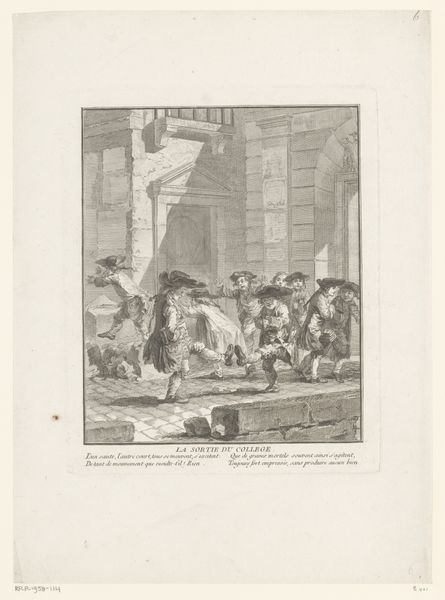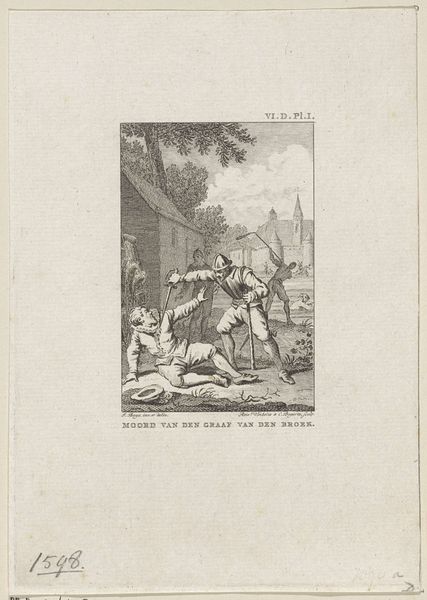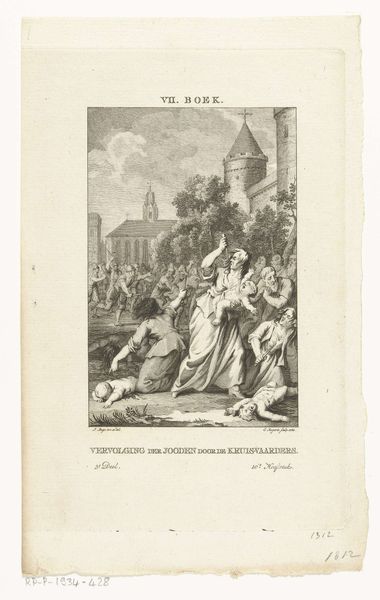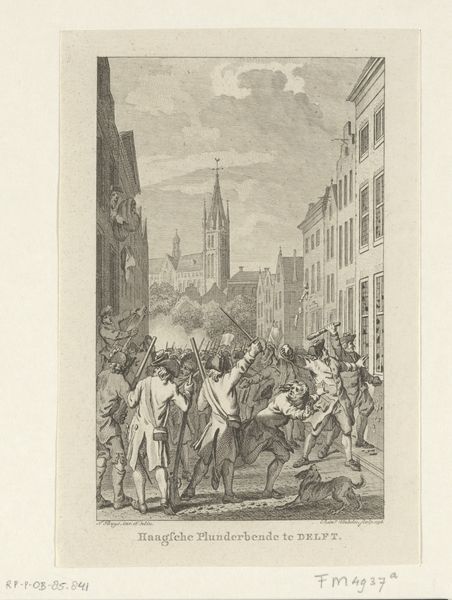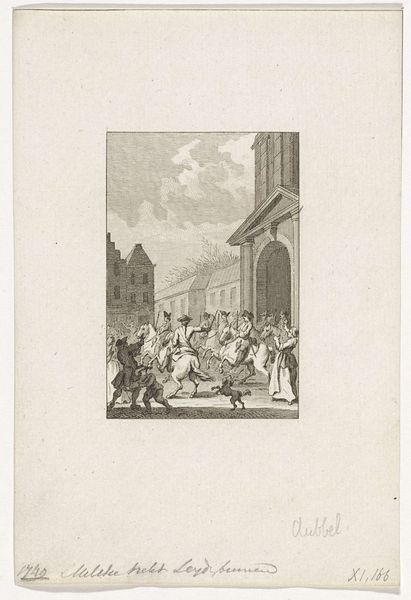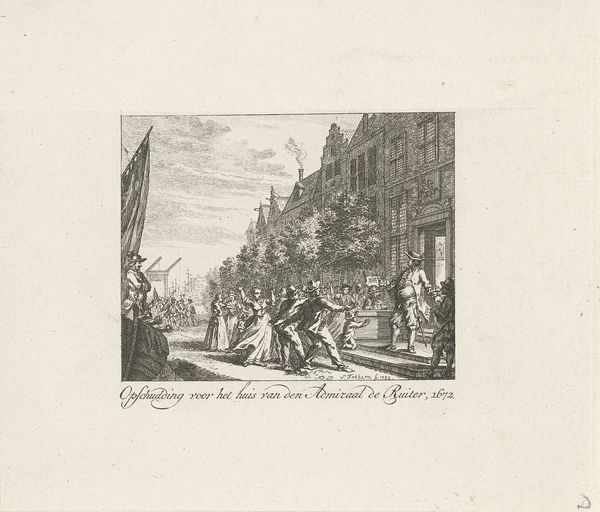
Priester brengt het sacrament in veiligheid tijdens oproer in Amsterdam, 1444 1786 - 1792
0:00
0:00
Dimensions: height 142 mm, width 98 mm
Copyright: Rijks Museum: Open Domain
Harmanus Vinkeles made this print of an event that took place in Amsterdam in 1444, using engraving. Engraving is a process of carefully incising lines into a metal plate, in this case most likely copper, using a tool called a burin. The plate is then inked, and the surface wiped clean, leaving ink only in the engraved lines. When paper is pressed against the plate, the image transfers. Look closely, and you can see the crisp precision of the engraved lines, which give the scene its dramatic intensity. The technique has a fascinating social history. It was initially developed by goldsmiths and armorers to decorate luxury goods, later adopted for printing, and still later for mass production. The labor involved in creating these intricate lines is considerable; the degree of effort speaks to the importance of communicating this scene to a wide audience. This artwork, with its emphasis on precision and detail, challenges traditional boundaries between craft and fine art.
Comments
No comments
Be the first to comment and join the conversation on the ultimate creative platform.
